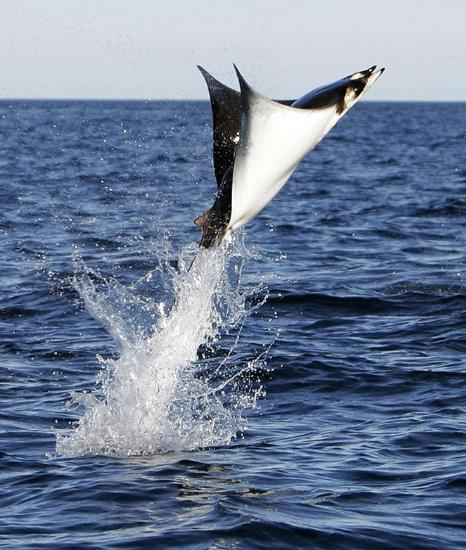
Woman killed by Eagle Ray! Mortality from stingrays is increasingly reported. Read on...
The LA times today reports that a woman encountered a stingray that leaped into the boat she was traveling in. She may have died from a wound inflicted by the calcium carbonate barb of a full size eagle ray (example pictured above).
The UNM wilderness medicine class visited the stingray exhibit 2 days ago for a scenario-based learning experience; marine stings were discussed in great detail at the Albuquerque Biopark aquarium. As we discussed, approximately 4 instances of stingray barbs penetrating the heart have been reported in Australia. Most readers no doubt are aware of Steve Irwin's well-publicized untimely death by this mechanism. Exsanguination and arterial lacerations have also caused human deaths.
Short of cardiac penetrating trauma, first aid consists of immersion of the affected extremity in non-scalding hot water. The venom that surrounds the calcium carbonate barb is heat labile. Prompt hot water treatment results in impressive pain relief. Xrays may be necessary to rule out retained foreign bodies. Tetanus vaccination is indicated - as in all lacerations. Be aware that marine injuries may be complicated by unusual pathogens - such as Vibrio species and Mycobacterium marinum.
The best approach is to avoid being stung altogether. Most bathers can avoid injury by shuffling their feet when entering the water. Otherwise - avoid cornering a large sting ray in shallow water - as Steve Irwin reportedly did. The recent death of the boater encountering a leaping ray, while seemingly bizarre, has been reported more than once in Australia. If a ray leaps into your boat, you may just be out of luck! Be aware that the stinging barb is located about 1/3 of the distance down the tail from the body of the fish.
Finally, note that hot water is the treatment of choice for most penetrating marine stings, including stonefish, scorpionfish, even invertebrate stings such as urchins. Hot water is increasingly recognized as effective treatment for box jellyfish stings and portuguese man of war stings. More on that later!


3 comments:
Nice photo. That is not a sting ray. It is a Mobula Ray.. more similar to a Manta Ray.. None of the rays are a threat to humans.. except for the occasional human who steps on a Manta. The Steve Irwin incident was an amazingly lucky strike, that happened to pierce his heart.
:)
PS. Let me know, if I can do any further homework to substantiate your thoughts ;)
~Q
(correction... Except for the occasional human who steps on a STING (not Manta) ;)..
Post a Comment